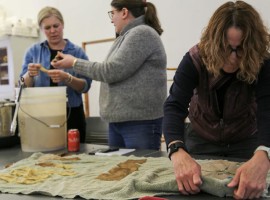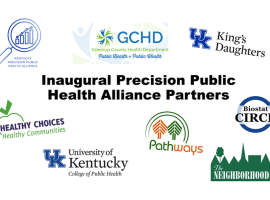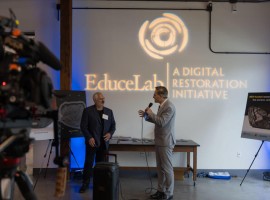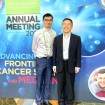UK Study Shows Promise Toward Prevention of Melanoma
In a study published in the Journal of Biological Chemistry, a team of University of Kentucky researchers led by Stuart Jarrett, Ph.D., and Dr. John D’Orazio have discovered specific protein interactions that may help cells resist ultraviolet (UV) damage and carcinogenesis.
The UK study focused on the role of a cell receptor found in melanocytes known as the melanocortin 1 receptor (MC1R). This receptor helps cells produce melanin pigments, which get deposited in the skin and act as “built-in sunblock” to protect the skin from harmful UV rays in sunlight. The MC1R also protects melanocytes by increasing their ability to repair DNA damage caused by UV exposure – damage that can directly lead to the development of melanoma.
Though MC1R signaling enables melanocytes to both protect against and resist sun damage, the mechanisms by which this pathway does this are poorly understood. Jarrett and D’Orazio discovered specific interactions and modifications that occur with MC1R activation and hope to manipulate them in order to enhance the DNA repair process, offering additional protection from melanoma.
As the deadliest form of skin cancer, melanoma affects nearly 80,000 individuals each year, and Kentucky ranks among the top 10 states in the country for rates of diagnosed melanoma and is in the top five for melanoma deaths. Although it’s common knowledge that sun damage is a risk factor for melanoma, the incidence rates for this aggressive cancer have been on the rise for decades.
Jarrett, UK assistant professor of toxicology and cancer biology and lead author on the paper, hopes that scientific discoveries like this, along with more public health education around the dangers of sun exposure and tanning beds, will help reduce the incidence of this largely preventable disease in the Commonwealth and beyond.
“We’re hopeful that our recent discoveries will lead to new therapies that will ultimately decrease the burden of melanoma in our state,” Jarrett said. “I would like to see more focus put into active melanoma prevention, whether by increasing public awareness of the harmful effects of UV, making an effort to practice sun-safe behaviors with our families, or using science-based approaches to enhance the skin’s ability to resist UV damage and development of cancer.”
This work was funded by the National Institutes of Health.





